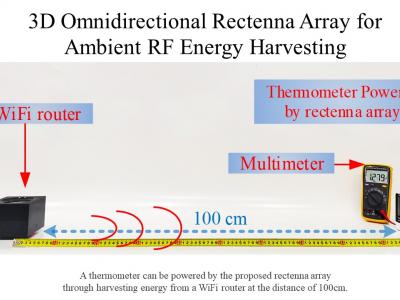Power and Energy

Implementation of the time-domain directional TD32 introduced by SEL in Matlab/Simulink based on the user manual of SEL T401L for the researchers who need to simulate this relay.
- Categories:
 204 Views
204 Views
The synthetic dataset has been produced by an industrial simulator that is able to generate a set of samples representing the working parameters of a device during its operation.
The simulator is not publicly available. The formalization of the domain used by the simulator is now the same adopted in the control system of the chillers. Thus, the simulator provides a good starting point to collect data that describes the studied domain.
- Categories:
 703 Views
703 Views
Commercial refrigerated display lighting (RDL) systems require LED drivers to provide constant 24 V to multiple LED light bars connected in parallel, each with a built-in current regulator to maintain a constant output brightness.The system uses a passive infrared motion detector to detect approach of people and a dimmer controller to further reduce the power consumption of the LED light bars.RDL system typically requires 100% and 20% only brightness control, so the dimmer controller can be replaced by a 0-10 V dimmable LED driver.B
- Categories:
 55 Views
55 Views
The dataset contains detailed information on a 100kVA transformer in ONAN cooling mode. The file consists of three PDF documents, which describe the transformer’s overall structure, core structure and size, winding structure and dimension, respectively.
- Categories:
 168 Views
168 Views
The case contains 118 lines, 99 loads, 27 generators, and an external grid, which is set to the slack generator. The generators on buses 14, 31,41, 54,73, 84, 89, and 106 are solar farms, and off-shore wind farms are only integrated into one area, i.e., at buses 71 and 72, to represent the real-world integration of offshore wind resources.
The dataset is to incorporate dynamic line rating into the optimal power flow analysis.
- Categories:
 618 Views
618 ViewsThe supplementary file includes the experimental waveform which we recorded in the continuous operating test. It shows the dynamic response of the close-loop control. From the waveform, both the static and dynamic current are not matched at the beginning. The DSP measures the errors and the Vcc is changed by adjusting the duty cycle of the buck converter. The transient current is matched via adjusting the lagging time between the gate signals. After a couple of cycles, the current become balanced.
- Categories:
 94 Views
94 ViewsThis dataset is in support of my research paper - Short Circuit Analysis of 666 Wh Li-Ion NMC
Faults and datasets can be copied to submit in fire cause investigation reports or thesis. The simulation is run for 20 hours (72000 seconds) of simulation time for each fault of 100 faults.
PrePrint : (Make sure you have read Caution.)
- Categories:
 2477 Views
2477 ViewsThis dataset is used to design patent and many machines can be designed using this dataset.
This is a very important dataset to do breakthrough. One of the secrets behind invention is revealed in these datasets.
Part of this design, with manually done tabulated calculations were submitted as the proposal design (for innovation challenge) proposed by the author, in the small concept paper to Ministry of Railways, Govt. of India in the year 2017.
As the Excel files(using LibreOffice) are given, so no paper is written is for it.
- Categories:
 1924 Views
1924 Views



